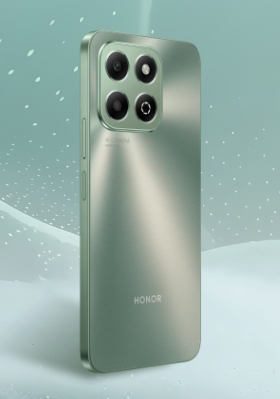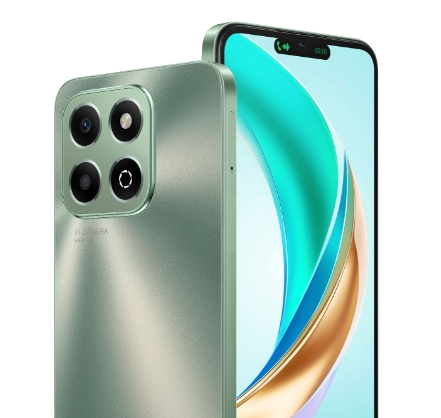Smartphone batteries degrade naturally, but many users unknowingly accelerate this process through daily habits. A deteriorating battery leads to shorter usage times, sudden shutdowns, and eventually costly replacements. Unlike other components, the battery is consumable - its capacity diminishes with each charge cycle. However, understanding what affects battery health can help you extend its lifespan significantly. Common misconceptions about charging practices often do more harm than good. In this article, we'll examine the real factors impacting battery longevity and provide practical solutions to maintain optimal performance.

How Charging Habits Impact Battery Longevity
The Truth About Overnight Charging
Many people believe leaving phones charging overnight destroys batteries, but modern devices have built-in safeguards. Once reaching 100%, smartphones stop active charging and switch to trickle power. However, keeping batteries at full charge for extended periods does cause slight stress. Lithium-ion batteries prefer partial charges between 20-80% rather than constant full cycles. If you must charge overnight, consider using a smart plug that stops power after a set time. Some manufacturers offer optimized charging features that learn your routine and delay the final charge until morning. The heat generated during prolonged charging matters more than the duration itself - remove thick cases and avoid placing phones under pillows.
Fast Charging vs. Slow Charging: Which is Better?
Fast charging technologies deliver impressive power boosts but generate more heat, the primary battery degrader. While convenient for quick top-ups, frequent fast charging accelerates capacity loss over time. Standard 5W chargers produce less heat and are gentler for overnight or workplace charging. A balanced approach works best - use fast charging when urgently needed, but regular slow charging for daily maintenance. Some devices now include adaptive charging that automatically adjusts speeds based on usage patterns. Cable quality also affects charging efficiency; damaged or low-quality cables may cause inconsistent power delivery that stresses battery cells.
Environmental Factors That Degrade Your Battery
Extreme temperatures are among the worst enemies of battery health. High heat causes permanent chemical changes that reduce capacity, while extreme cold temporarily limits performance. Leaving your phone in a hot car or direct sunlight can push internal temperatures beyond safe limits. Similarly, using demanding apps while charging generates combined heat that's particularly damaging. Cold environments below freezing cause batteries to drain faster and may trigger unexpected shutdowns. Humidity also plays a role - moisture can corrode charging ports and affect power management systems. For optimal battery life, store and use devices at room temperature whenever possible, avoiding sudden temperature fluctuations.
Usage Patterns That Shorten Battery Life
Certain daily habits unknowingly strain batteries more than others. Constantly draining batteries to 0% before recharging causes deep discharge stress, while frequent full 100% charges apply high-voltage stress. Gaming or video streaming while charging creates simultaneous heat from both processor activity and charging circuits. Using non-certified chargers may deliver unstable voltage that damages battery management systems. Background apps constantly refreshing location data or running processes contribute to unnecessary discharge cycles. Even vibration motor usage affects battery drain - heavy haptic feedback users may notice faster degradation over time. Developing awareness of these patterns helps adjust usage for better battery preservation.

Hardware & Software Factors You Can't Ignore
How Battery Chemistry Changes Over Time?
All lithium-ion batteries degrade through irreversible chemical reactions occurring with each charge cycle. The anode develops microscopic cracks that reduce its ability to hold ions, while electrolyte solutions gradually break down. This natural aging accelerates when batteries experience high temperatures or remain at extreme charge levels. Modern batteries typically retain about 80% capacity after 500 complete charge cycles. Some manufacturers use advanced electrode materials that slow this degradation, but all batteries eventually wear out. Understanding this natural process helps set realistic expectations for long-term performance.
The Role of Operating System Updates
Software plays a crucial role in battery management through optimized power algorithms. System updates often include improved battery calibration and more efficient background process management. However, some updates may initially seem to reduce battery life as the system re-learns usage patterns. Features like adaptive brightness and app standby work behind the scenes to minimize unnecessary power drain. Battery health monitoring tools introduced in recent updates help users track degradation and identify problematic apps. Ignoring updates may mean missing critical battery optimization improvements that could extend your device's usable life.
Manufacturing Defects & Battery Quality Differences
While most batteries meet standard specifications, manufacturing variances do occur. Some cells may have slightly higher internal resistance from production, leading to faster degradation. Premium devices often use higher-grade battery cells with better thermal stability and longevity. The quality of battery management systems also varies - more sophisticated circuits better regulate charging voltages and temperatures. These hardware differences explain why similarly used devices sometimes show different battery health after identical time periods. Unfortunately, consumers have little visibility into these manufacturing details when purchasing devices.
Conclusion
Maintaining battery health requires a combination of smart charging habits, environmental awareness, and software maintenance. Avoid extreme temperatures, keep charge levels between 20-80% when possible, and use appropriate charging speeds for different situations. Regular software updates ensure access to the latest power management improvements. For users needing reliable all-day power, devices like the HONOR X6b in UAE offer exceptional endurance with their 5200mAh & 35W Turbo-Charging Large Battery. By understanding these battery principles and implementing simple changes, you can significantly extend your smartphone's usable life while maintaining consistent performance. Remember that while all batteries eventually degrade, proper care can make the difference between replacing your phone in one year or three.
